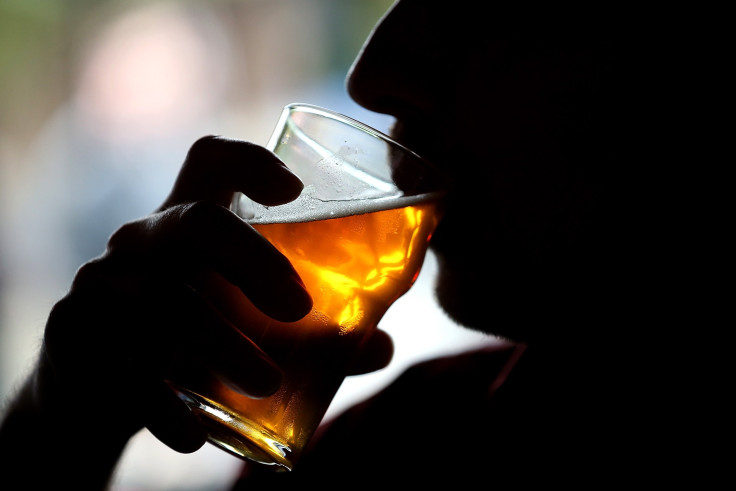US Alcohol Abuse, Deaths And Binge Drinking All On The Rise

New Year’s Day is just around the corner, and many people are taking advantage of the holiday to set resolutions, like drinking less alcohol.
While people may want to drink less, there is still temptation out there to consume alcohol, like ads, posts of alcoholic beverages on social media and throwing holiday parties that involve booze.
Alcohol Use Among Americans
Studies have shown that alcoholism has risen over the past years. Alcohol use spiked by 11 percent between 2002 and 2013, according to a study published in JAMA Psychiatry this year. Alcohol use mostly increased among women, older adults, racial/ethnic minorities, and those with lower educational level and family income.
Binge drinking, which happens when women have four or more drinks and men have five or more drinks in two hours, has also increased in the United States, especially among females. Binge drinking among Americans jumped by 17.5 percent among women and 4.9 percent among men between 2005-2012 .
Below are more facts about alcohol use in America from the Centers for Disease Control and Prevention and National Institutes of Health’s National Institute on Alcohol Abuse and Alcoholism.
Alcohol-Related Deaths and Health Risks
Excessive alcohol use led to about 88,000 deaths each year between 2006-2010, according to the CDC. Alcohol is the third leading preventable cause of death in the United States, after tobacco, which is the first, followed by poor diet and physical inactivity.
Unrestrained alcohol use led to a total of 2.5 million years of potential life lost each year between 2006-2010. The deaths shortened people’s lives by an average of 30 years, according to the CDC.
Deaths due to cirrhosis, which are many times associated with alcohol use, declined for three decades but began increasing again since 2006. Among all cirrhosis deaths in 2013, nearly half were traced to alcohol, according to the National Institutes of Health.
In 2015, there were more than 78,000 deaths due to liver disease in the U.S. among people ages 12 and older. Among those deaths, 47 percent were linked to alcohol.
Liver disease linked to alcohol was the primary reason for 1 in 3 liver transplants in the U.S. in 2009.
There has been about a 50 percent increase in ER visits related to excessive drinking since the start of this century.
In 2014, alcohol-impaired driving led to nearly 10,000 deaths, making up 31 percent of overall driving fatalities.
About 1,800 college student between 18-24 years die from alcohol-related unintentional injuries, including car crashes.
Alcohol Use: Dangerous Outcomes
Besides car crashes, alcohol use can lead to other dangerous incidents. According to NIH, 696,000 students between 18-24 years are assaulted by another student who has been drinking.
Data shows 97,000 students between 18-24 report experiencing alcohol-related sexual assault or date rape.
Alcohol use also leads to unhealthy living environments. A 2012 study found more than 10 percent of U.S. children live with a parent who has alcohol problems.
Binge Drinking Statistics And Alcohol use Disorder
In 2015, about 27 percent people ages 18 or older said they had engaged in binge drinking the past month, while 7 percent reported heavy alcohol use in the past month.
Alcohol misuse cost the country $249 billion in 2010. Binge drinking accounts for three-quarters of the total cost of alcohol misuse in the United States.
In 2015, 15.1 million Americans ages 18 and older reported having an alcohol use disorder.
In 2015, about 623,000 teens in the U.S. ages 12-17 said the had an alcohol use disorder.
In 2015, about 38 percent of college students ages 18-22 said they had engaged in binge drinking in the past month, higher than other persons of the same age.
In 2015, about 13 percent of college students reported heavy alcohol use in the past month, more than other persons of the same age.
In 2015, about 5.1 million people ages 12-21 said they had engaged in binge drinking the past month. Meanwhile, approximately 1.3 million people ages 12-20 reported heavy alcohol use in the past month.
© Copyright IBTimes 2024. All rights reserved.











